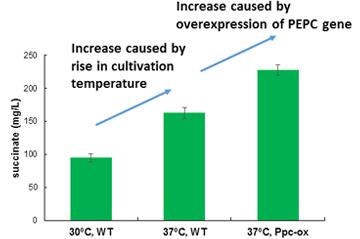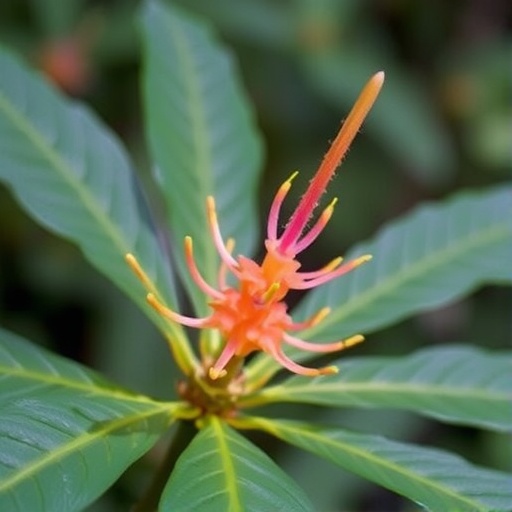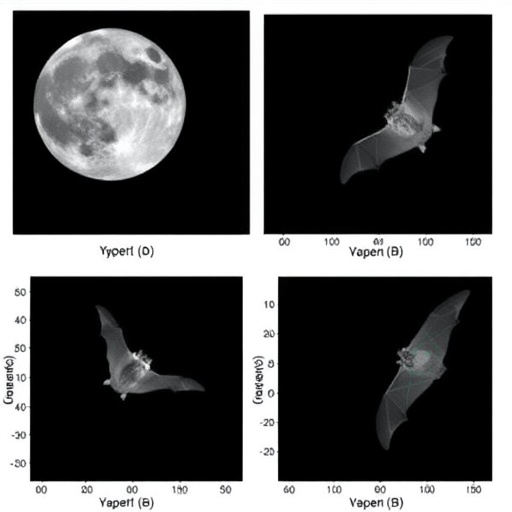
Credit: Kobe University
Succinate is widely used as a raw ingredient for petrochemicals, and there is high demand for a way of producing succinate that is renewable and environmentally benign. A Japanese researcher has discovered that succinate production levels increase when cyanobacteria is grown above the ideal temperature for cell growth. He used insights into the metabolic pathway engineering to achieve the world's most efficient production rate for bio-succinate.
The discovery was made by Professor Tomohisa Hasunuma (Kobe University Graduate School of Science, Technology and Innovation) as a Japan Science and Technology Agency Strategic Basic Research Program. The findings were published in Metabolic Engineering on May 27.
Professor Hasunuma's research team aimed to find the reaction that acts as the bottleneck in the metabolic pathway when CO2 is converted into succinate, then use genetic engineering to speed up this bottleneck reaction and increase the production of succinate.
Metabolome analysis measures the amounts of the various metabolic substances within cells, and it can be used to estimate the metabolic intermediates that contribute to increased production of succinate. The research team built on this technology to develop a dynamic metabolome analysis technique that can observe the turnover in amounts of intracellular metabolites. By applying dynamic metabolome analysis when they observed an increase in succinate production, they were able to identify the bottleneck reaction in the succinate biosynthesis pathway.
The cyanobacterium used in this study (Synechocystis sp. PCC 6803) is one of the most popular cyanobacteria for research worldwide. The team found that the ideal temperature for making succinate from this cyanobacterium is about 7 degrees Celsius higher than the cell growth temperature of 30 degrees Celsius. Using dynamic metabolome analysis they clarified the mechanism for producing succinate at high temperatures, and showed that PEPC (phosphoenolpyruvate carboxylase) is involved in the bottleneck reaction. The group then developed a recombinant Synechocystis which has higher PEPC activity than the wild type through genetic engineering. By improving PEPC reaction, and growing cyanobacteria at 37 degrees Celsius, they managed to raise the production rate of succinate to 7.5 times higher than previous studies.
"This study is an important step towards producing bio-succinate from CO2. We now aim to increase the production of succinate by refining the metabolic pathway" comments Professor Hasunuma. "By targeting various metabolic systems, this line of research could make large contributions in basic research into metabolic pathway control structures, and applied research into substance production."
###
Media Contact
Eleanor Wyllie
[email protected]
@KobeU_Global
http://www.kobe-u.ac.jp/en/
Original Source
http://www.kobe-u.ac.jp/research_at_kobe_en/NEWS/news/2018_06_06_01.html http://dx.doi.org/10.1016/j.ymben.2018.05.013




